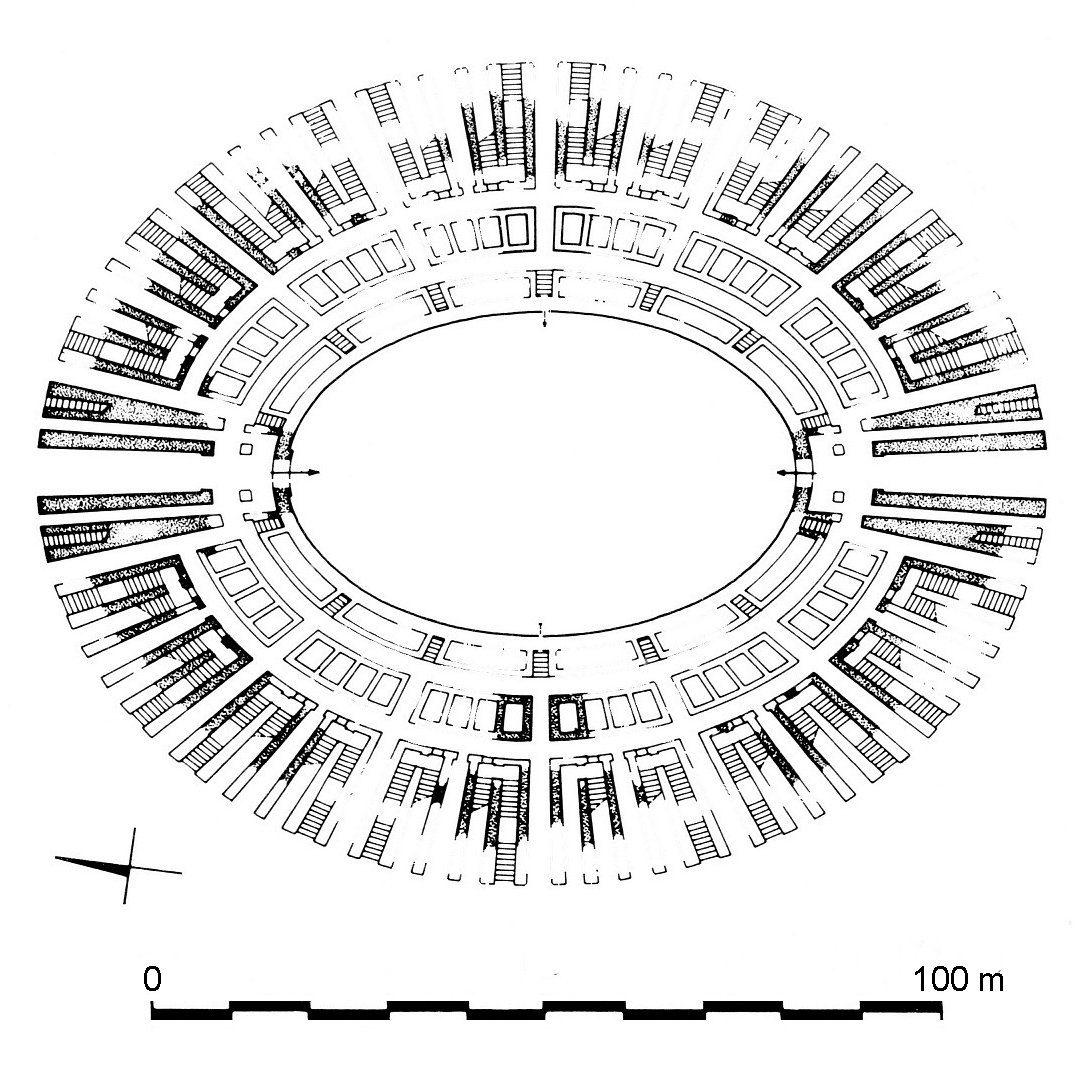XXVII Perigueux (Vesunna)
What3words – stealing.moon.chapters
Visited June 2024
Construction date – 1st Century AD (Reign of Tiberius)
Capacity – 18,000
Status – Byronic ruins, saved and presented in a public park.
Perigueux sits on the bank of the river l’Isle in the heart of the Dordogne, famous for prehistoric cave paintings, fine wines and charcuterie.
The substantial chunks of masonry and ivy clad arches which form the remains of its 18,000 seat stone amphitheatre wouldn’t look out of place in the sort of romantic painting of classical ruins that hangs in English stately homes as a souvenir of an 18th century ancestor’s grand tour.
For the benefit of the Perigords and visitors to their rather charming city, what remains of their amphitheatre was set out in 1875 as a smart public park and school garden with pools, seating and shady trees. It contains a display, models and information panels about the Roman edifice.
It is surrounded by the oval perimeter road Boulevard des Arènes and radial roads including Rue des Gladiateurs and Rue de L’Amphitheatre. Surviving inscriptions indicate its original construction was promoted (and presumably funded) by members of a family (Pompeia) of Roman origin.
Vesunna went into decline in the 3rd century. In 275 the town was raided by Franks and German invaders during anarchic upheavals in the Roman Empire. Defensive walls were built using masonry from the amphitheatre and other buildings, as had happened at Bordeaux, Amiens, Tours and other cities. The raid and pestilences had reduced the population, and the town inside the new walls was only a fraction of the size of the previous settlement. The amphitheatre was turned into a large defensive bastion.
In the Middle Ages, the Count of Perigord built a keep and towers on the remains of the amphitheatre and it became his castle. The Roman walls were subsequently incorporated into fortified houses of local feudal lords. An engraving from 1575 shows that the building was substantially intact, with two floors of arches.
From 1644 the Visitandine sisters (a religious order) used the stones of the amphitheatre to build the church of their convent. In 1688, they discovered a niche containing statuettes of Roman goddesses, which they destroyed as pagan idols.
Roman altars, tombs and architectural elements were found when parts of the city walls were dismantled to facilitate the modern development of Périgueux. There are literally tons of these artifacts, including the floor plan and walls of an entire Roman town house, in the Vesunna Gallo-Roman Museum at 20 Rue du Regiment D’Infanterie, Parc de Vésone..
Where some of the stone ended up.
Reconstruction of plan form



















